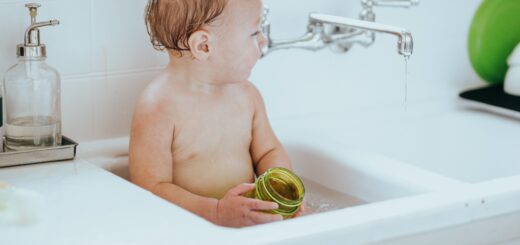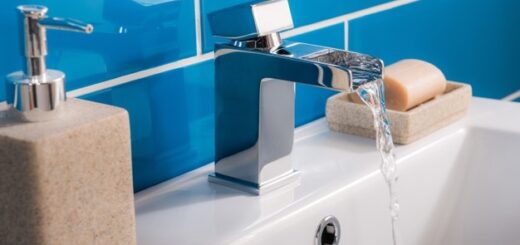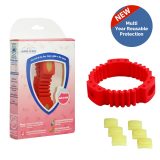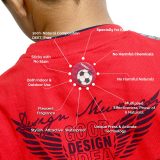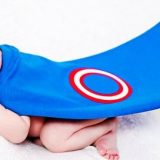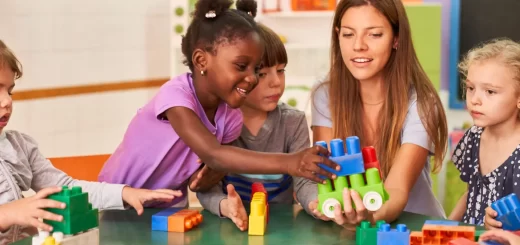Are you Really Prepared with Baby Proofing and Parenting Habits?
With a child comes a mother who knows nothing but the need for baby care. So, if you’re a new mother who’s worried about baby proofing and how to care for your kid, we can offer some infant care advice. Here are some basic methods to simplify your life. Your baby’s birth brings you great delight and opens up a whole new world for you. However, taking care of a baby can be challenging at times, especially for first-time mothers. But don’t panic; with our infant care advice, you’ll breeze through the first few months and then be a pro at parenting and baby proofing with child safety home kit. This is what you must do for excellent parenting:
Holding the baby right:
When you’re holding your infant, his head should rest in the crook of your arm, and your hand should support his spine. Feed your baby with your other hand, touch his cheeks, or just hold it softly over his chest or tummy.
Do you realize that shaking your baby might cause brain damage as well? Shaking his will not help you achieve your aim, whether you’re attempting to put him to sleep or just comfort him. Instead, gently rock him from side to side while singing a lullaby.
Remember that your baby isn’t ready for a rough game. So throwing things in the air while jiggling the baby on your knees isn’t a good idea.
skin-to-skin Touch:
Know that your kid needs time to process the experience of leaving the womb and entering the world. Give him adequate skin-to-skin contact to make this simpler; this will let her sense your warmth and be closer to the mother’s heart. Holding your baby close to your heart while providing enough skin-to-skin contact can make her feel more comfortable and calm his senses, as it was the only thing he heard while in the womb. While practicing kangaroo care, even dads can do the same.

Baby room:
Keep your baby’s room spotless, and keep him out of the room while you dust and clean. This will keep him safe from infection and allergens in the air.
Talking to the Baby:
Talking to your baby has a lot of unspoken advantages. One of them is that it aids in baby brain development and allows your child to learn language more quickly. It can also help you bond with your baby. This simple deed can also help you combat the newborn blues.
Hygiene:
To minimize infection and other caused allergies, always wash or disinfect your hands before picking up your infant and wear fresh clean clothes. At least twice a day, wash and disinfect feeding bottles. Remember to sterilize the parts of your breast pump that can be sterilized as well. Not to mention the teats. If at all possible, properly clean them before each feeding.
Diaper Check:
Do it frequently. Every four hours or so, check on the diapers. A healthy newborn would urinate frequently. Diaper rashes can occur if you keep your kid in a soiled diaper.
Feeding:
During his early days, your baby just requires two things: good feeding and adequate sleep. Sleeping will be difficult now because, while your newborn is intended to sleep for 16 to 20 hours per day, he may not do so all at once. Your baby will most likely cry for a feed every two hours or less.
If you prefer to breastfeed your infant, make sure he has adequate areola inside his mouth to prevent air intake.
Keep heated water in your thermos and make a new feed every time. Any leftovers should be discarded. If your baby hasn’t eaten in a while and has been sleeping for more than five hours, wake him up and feed him. But don’t force-feed.
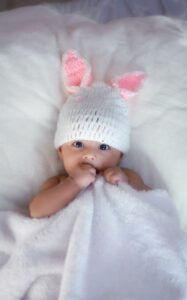
Umbilical cord care:
For at least 10 days or up to three weeks after the birth, a portion of your newborn baby’s umbilical cord would be attached to him. It’s a delicate area for your infant, and proper care is essential. To keep the area dry and help it recover faster, use medicinal powders as directed by your doctor. To avoid any pressure on the region, make sure your infant is dressed loosely. Continue to care for the region until it is totally healed after it has dried and fallen.
Bathing:
Your infant will move from sponge baths to regular baths once the umbilical cord has fallen and the area has healed. When bathing your baby, use caution.
Always Attentive:
It’s a common misconception that making your baby cry is helpful for her lungs. Though crying is an important physiological event, it’s not a good idea to keep your infant screaming. This could result in mental anguish. Remember that his crying is his method of informing you that something is wrong with him. Keep an eye out for the indicators so you can attend to his requirements.
Did you know that your kid can start rolling over at the age of two months? You may never know when and how quickly your child meets her milestones. To avoid accidents, never leave him alone on the bed, in the bath, or in the crib.
Burping:
After each feed, repeat. Gently pat your baby’s back while holding him upright with his chin on your shoulder. Move your hands up and down his back, from lower to upper. If he inhales air during his feeds, his systems are likely to be clear of it following a burp. This will relieve his colic symptoms, improve his sleep, and help his digestion.
Bed Time:
To combat SIDS, or sudden infant death syndrome, many specialists advise avoiding co-sleeping. If you insist on doing so, make sure your baby has enough room to sleep and turn around. Otherwise, put him in a cot or crib close to your bed so you can respond to his needs quickly, even in the middle of the night.
Keep all toys, pillows, and soft toys away from your baby’s bed or sleep area as a general rule. If your baby inhales the fur from the soft toys, it might cause respiratory problems or allergies, as well as SIDS. Keep cushions and toys out of your baby’s sleeping area to avoid suffocation or accidents.

Dress Code:
The beautiful and colorful outfits in the newborn baby stores will catch your eye, but pass them up. By ignoring them, you are benefiting your child greatly. Avoid buttons, ribbons, and tees that must be pulled over your baby’s sensitive head by sticking to cotton jablas. Cottons are the greatest choice for newborns since they protect their delicate skin from allergies.
Doctor’s Advice:
Fever, diarrhea, and vomiting can strike your child at any time. Never attempt self-medication. Contact your pediatrician for assistance, even if it involves going to the doctor twice in the same week. When it comes to baby care, don’t take any chances.
Baby Proofing Zones:
Giving birth to a child is a huge responsibility. You want to provide the best for your child as a new parent. As a result, it’s crucial to baby-proof the house long before he or she comes. Here are some ideas for baby-proofing your home.
Nursery
Parents often spend so much time and effort decorating the nursery that they overlook a vital factor. Because your child will spend the majority of his or her time in this room, it is critical to baby-proof it. Simple solutions include placing supplies such as baby wipes and diapers at a height where your baby cannot reach them. Remove any furniture that is near the crib. Window locks are one of the safety problems that takes time to address. They’re crucial so you can safely lock them when your infant is in the room sleeping.
Bedroom/living room
The electrical connections can be hidden and the television can be mounted on the wall. Additionally, if you have a stairwell inside your home, it is critical to install baby gates at the top and bottom. If you have any sharp edges, such as those on your centre table or other furniture, it is critical to install locks to prevent your infant from injuring himself.
- Your child learns to walk using the table’s edges for support. Children can be seriously hurt if the table’s edge is sharp. Sharp corners are common on coffee tables, TV units, and even window ledges. Bumpers can be used to shield your children from dangerous edges.
- Make sure that all of your furniture is appropriately balanced on the floor. Unbalanced furniture might topple and cause injuries.
- Lock all furniture shutters that can be readily manipulated and opened using latches.
- TV stands must be properly fastened to the wall. If a child tries to climb on top of a television stand, the set may fall on them.
- Because children could fall and injure themselves against a sharp or stony hearth, use a guard door to protect your fireplace. While the flames are burning, use heat-resistant gates. When not in use, the door should be locked, and fire stoking instruments and wood logs should be kept out of reach of children.
- Outlet protectors should be used on all lower-height electrical outlets.
- If your child knocks over or drops a photo frame, the glass can break and damage them. Replace your frames with plastic instead of wood or metal and try to install them on the wall.
- Avoid putting anything near your windows.
- Keep hairdryers and other gadgets unplugged and out of reach in your bedroom.
- For your child’s protection, keep any types of body spray/perfumes, hair sprays, nail polish & remover, makeup, and other products out of reach.
Kitchen
Installing safety tassels and cords on blinds or drapes in the kitchen helps to secure them. When not in use, keep any sharp goods and unused electrical appliances such as mixers and knives. It’s worth noting that drawer locks are installed wherever such appliances and valuables are kept. Socket locks are another key tool for baby proofing. When not in use, they ensure that your electrical sockets are closed.
- To keep children away from home objects, install safety latches in lower drawers and cabinets.
- Kitchenware, appliances, glass crockery, and sharp objects like as knives and scissors should be kept out of reach and away from the edge of counters and tables where children can easily reach them.
- Cook on the back burners whenever possible, and tilt pot and pan handles toward the back of the stove.
- To keep your youngster from touching the oven, use stove knob covers and oven door locks.
- Make the lower cabinets more secure. Drain openers, dishwasher detergent, furniture polish, and dangerous chemicals should all be stored safely.
- Refrigerators are not safe either. Install a latch on your refrigerator if your youngster can open it. Choking hazards such as grapes, nuts, and glass bottles should be kept hidden or on high shelves.
- Insect traps should not be placed in areas where your infant can reach them.
- Keep gas lighters, matchboxes, and other similar items out of the reach of youngsters.
- Never have anything that will facilitate his access to the gas burner.
Bathroom
- Cabinets and drawers should have safety locks installed.
- Bathroom cleaning materials should be kept out of reach, either in a cupboard or on a high shelf.
- Install a toilet lock to keep the toilet lid locked and protect tiny fingers.
- If he falls, cover the tub spout to protect his head. Rubber spouts are a wonderful solution for covering the spout.
- Ensure that all water on the floor is mopped up after baths. Nonslip mats can also be used in and out of the tub, as well as on the bathroom floor.
- To prevent scalding, install anti-scald devices on taps and shower heads, and set your water heater temperature to 120 degrees F (48 degrees C).
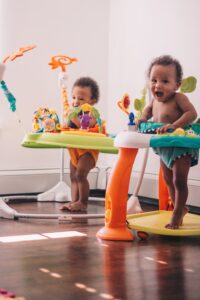
Common Safety Tips:
- Falls are common among children. Protect your floors with rubber flooring, especially where kids spend the majority of their time, to avoid injury. Because it is much safer than any other flooring, it is a fantastic choice for youngsters to walk and play on.
- Use safety gates at the top and bottom of the stairs. If your stair/balcony railing contains horizontal members, children will always try to climb it! Vertical members and balusters should be spaced at least 4 inches apart in your railing. Assume a minimum height of 1.00m (3’3″) for balcony and staircase rails, as well as the terrace parapet wall. If the current height is inadequate, increase it for a few years.
- To keep children away from potentially dangerous areas such as a swimming pool, only use doorknob covers. Make sure these gadgets are simple enough for adults to use in an emergency.
- Install a window grill if you have a low-height window to keep it safe. To prevent minors from opening windows, use window guards and window wedges. If you live in a multi-story building, be sure your windows have safety grills.
- The best approach to keep blinds safe for children is to use cordless shades or cord cleats. Permanent tie downs should be installed. Looped pull cords can also be cut into two strands and finished with tassels at the end.
- Secure your main entrance door with safety locks.
- If you have a pool in your bungalow, be sure it has a safety barrier.
Baby-Proofing kit:
Safe-O-Kid Knee Safety Pad
One of life’s most cherished moments for any parent is watching their children crawl. While this may appear to be a fun phase at the time, you may not notice your child is unhappy until you figure out why he or she is sobbing all the time. Thankfully, knee protectors are available. It’s time to get a knee-safety pad if your youngster has only recently started crawling.
One of the finest solutions currently available is the Safe-O-Kid Knee Safety Pad. This knee safety pad is designed to give your child the most protection possible while learning to walk. The airy and silky fabric of this safe-o-kid knee safety pad is appealing.
Safe-O-Kid Safety lock
You really would like to leave no question unanswered to your children’s protection. Your child may grasp for items that could endanger his or her safety. The Safe –O- Kid Safety Lock secures cupboards and windows so that your child cannot open them aggressively and damage himself. The baby proofing system from Safe-O-Kid includes a safety lock that prevents your child from reaching and opening the cabinets.
Safe-O-Kid Gas Knob
It’s possible that your little bundle of joy enjoys making meals for you. However, we all know that now is not the moment. Gas knobs, thankfully, protect your child from mistakenly turning on the burner. You may now effortlessly install gas without the use of any tools or equipment, and it only takes seconds. The Baby Proof safety Kit from Safe-O-Kid includes two gas knobs that prevent damage. The nicest aspect is that it is transparent, allowing you to see whether the burner is turned on or off.
Safe –O –Kid Fruit Nibbler
A fruit nibble is a crucial product for your baby’s development. It instils the habit of independent feeding, which is undoubtedly a time a mother longs for. After the baby has reached the age of six months, a mother can offer her baby a fruit bite. It makes feeding newborns much easier and more convenient for mothers because they don’t have to chase after their children. A fruit nibbler, on the other hand, can provide the infant with all of the necessary nutrients. The Safe-O-Kid Baby Proofing Kit includes a BPA-free fruit nibbler that is both safe and non-toxic.
Safe –O –Kid Anti Shock Cover
Installing Anti Shock Cover in open sockets is one of the most critical infant safety products to prevent injury to your children. Your baby may reach out accidentally to these exposed outlets, which can be fatal. It is quite tough to remove once it has been implanted. Anti-shock covers are simple to install and may be done in seconds.
Safe-O-Kid Corner Guard
You may not like the look of a corner guard or believe it is not appropriate for your home, but it is a critical baby need that you should not neglect. The first time you watch your baby move about the house is undoubtedly thrilling. However, you may need to be cautious about your baby’s safety as a result of this. Because your baby is starting to walk, it’s important to note that they may not be steady and could collide with any corner of the room. As a result, parents must consider installing a corner guard. The Safe-O-Kids baby proofing kit includes multiple corner guards of various sizes and shapes.

FAQS:
What age should you start baby proofing?
Since some of the suggested baby proofing measures may take time, start at least three months before your due date. You’ll need to undertake a second baby proofing sweep after baby starts crawling (about 6 to 10 months) to ensure the house is safe for a moving infant.
What is needed for baby proofing?
Checklist for Childproofing
- Child-resistant coverings are installed on electrical outlets.
- There are no dangerous or sharp edges or corners in both indoor and outdoor spaces.
- Childproof cabinets are used to store hazardous chemicals, cleaning materials, and prescriptions.
- Childproof window guards are installed on all windows.
- Hot pipes, Radiator, and so on
Do you need to baby proof stairs?
No matter how wide or tiny your stairs are, they must be babyproofed. Stairs that are steeper will require extra care, but you should restrict your baby’s access to any sets of stairs in the house. In some circumstances, your home may only have one step leading from one room to another.
Do I need to baby proof before baby is born?
Although you should baby proof the house before your child begins crawling, thinking about it before they are born is more beneficial. Before you bring your newborn home, make sure the crib and other furnishings around the baby are safe.
When can you remove baby proofing?
As you can see, a lot depends on the child’s maturity. Around the age of two or three, the majority of the visible gates and locks disappear. Furthermore, the age at which you can trust them to keep away from something is often less than the age at which you can trust them to use something unsupervised.
How do you baby proof a door?
Installing a lock or a security door chain is the simplest way to childproof your front door. The deadbolt or chain should be installed above the door handle and high enough so that even if youngsters find anything to stand on, such as a chair, they cannot reach the latch and unlock the door.
What are safety concerns for the baby?
From birth to six months, your child’s safety is paramount.
- Automobile Accidents. Car accidents pose a significant risk to your child’s life and health.
- Falls. Soon after birth, babies wiggle, move, and push against things with their feet.
- Burns. Babies between the ages of 3 and 5 months will make fists and grab at items.
- Suffocation and choking
What are 10 safety rules at home?
10 Important Children’s Home Safety Rules:
- Never Leave Your Children In The Water Alone.
- Keep all cleaning supplies and detergents out of reach of your children.
- Keep Your Child’s Sleeping Areas Uncovered.
- At home, cover all electrical outlets and wiring.
- Put the firearms away.
- Install a Smoke Detector in Your Home.
Why is childproofing a home important?
Childproofing your house with child saftey home kit provides a safe environment to keep your children safe at home, play and explore while also preventing injuries. Keeping your kid safe from the minute she arrives at your house is no simple chore! This gets increasingly more challenging when your child’s mobility grows, making it necessary to stay several steps ahead.
What are at least three important ways to keep babies safe at home?
Warm meals and beverages should be kept out of reach and away from the edge of a counter or table. Knives and other sharp objects should be kept out of reach or in drawers or cabinets that are locked or “childproof.” Appliance cords should be wound up and kept out of reach. To prevent your youngster from opening and closing cabinet drawers, install locks.

Other Baby Proofing Tips:
Falls
- Always set an infant carrier on the floor, not on a counter or a tabletop.
- Keep the infant secured in at all times. Never leave your child unattended on a bed, changing table, or baby seat where they could fall or slide off. Accidents can happen even if you look away for a second.
Fire Safety
- Do not vape and do not enable your child to smoke. Even smoking “outside” is dangerous to the newborn since smoke particles are carried by clothing, hair, and skin.
- Each level of your house should have a working smoke alarm. Every six months, replace the batteries in your smoke detectors.
- Each level of your house should have at minimum one fire extinguisher.
- Put a carbon monoxide alarm if your home is heated by gas.
Burns
- Must not handle hot liquids while holding your infant, and therefore do not microwave your child’s bottle to avoid burns. Many microwaves heat your baby’s formula unevenly, resulting in “hot spots” that really can blister your baby’s mouth. Warm the formula instead by pouring warm water from the tap over it or soaking it in a dish of warm water. Shake the bottle vigorously. Before feeding your infant, make absolutely sure you test the warmth on your hand and wrist.
- Set the temperature of your water heater to no more than 120 degrees Fahrenheit. Anti-scald devices for faucets and shower are a good idea.
Accidents
- Never shake or throw your child in the air. This can result in permanent brain injury or blindness.
- Even if your infant is sleeping, never leave him or her alone with a younger sibling or a pet.
- Never use a walker with your youngster. Every year, they transport thousands of children to the emergency room, mostly due to falls down stairs.
- Make sure your child can’t pull lights or other electrical things over their heads. Wrap electric cords along baseboard with electrical tape.
- Pull any tablecloths from the table that can be pulled.
- Please make sure the drawers have locks to prevent your child from pulling the drawer out on them.
- Secure furnishings to the wall to prevent it from falling on the youngster. Electronics should not be placed on top of high dressers or desks that could fall on the youngster.
Bathing
- Before putting your infant in the bath, test the water temperature to ensure it is not too hot. A excellent approach to test is to dip your elbow inside the water.
- Reduce the temperature of your heater to 120 degrees Fahrenheit.
- Never leave your infant in the bathtub unsupervised. A baby can drown in as little as a few seconds.
- Keep small appliances far from the water and bathing areas, such as dryers and radios. When not in use, keep these gadgets disconnected and out of reach.
Toy
- Check your child’s toys on a regular basis. Make sure toys are not sharp, are not breakable, and do not come apart. Your baby’s mouth should be able to hold the pieces/toys.
- Use toy chests that don’t have lids or that have supports that keep the lid free in any posture.
- Use caution when handling balloons to avoid choking.
Choking
- NEVER place strings or wires around the baby’s neck (for example, to carry a pacifier) or in his or her cot. Make sure there are no strings or hooks on your clothing that could choke your infant.
- Keep blinds and drapes cables out of reach to avoid accidental strangling.
- Store small objects that could cause harm or choking if eaten, including display pieces.
Feeding
- Never leave your baby unsupervised with a propped-up bottle; your kid could choke. Put your child to bed without a bottle.
- Keep raw vegetables, unpeeled apples, hard sweets, and other choking hazards away from your youngster.
- Only use restraining straps across your children’s waist as well as between their legs in a highchair to prevent them from sliding out.
Sleeping
- To lessen the incidence of SIDS (sudden infant death syndrome), all infants should be placed to sleep on their backs.
- Before you put your baby to sleep, give them a pacifier. SIDS is less likely as a result of this.
- Avoid soft bedding, such as pillows, that could suffocate your baby.
- Crib rails must be 2 3/8 inches apart fewe to avoid trapping the baby’s head.
- Keep your child’s room at a comfortable temperature and clothe them in clothing that won’t make them overheat.
- Breastfeeding your infant and ensuring that he or she receives all of the appropriate immunizations will help prevent SIDS.
- If your kid falls asleep in a car, swing, or carrier, try to get them out and place them on the floor.
Pets
- Keep food and drink dishes out of reach of your baby. The litterbox is the same way.
- Keep an eye on your child’s relationships with the pets and teach him or her to be gentle. Bite and scratch injuries can result from hitting or dragging the tail.
- If your infant has a scratch or scrape, don’t allow your animals lick his or her face or skin.
- After your child has played with dog/cat, have them wash their hands.
- Keep your baby’s pet toys out of his or her mouth.
- Most doctors advise against allowing dogs to sleep in your child’s bed.
Crawling and Walking
- Cover all outlets with electrical outlet covers.
- Anchor electrical cords to the floor.
- Securely install safety gates in front of stairwell and basement doors. Prevent gates with jewel slats, which give climbing toddlers with footholds. Instead, utilise swinging gates with vertical slats and a straight door.
- Use doorknob coverings to keep kids out of dangerous rooms and regions. However, be sure that these gadgets are simple enough for people to use in an emergency.
- Keep cleaning supplies and medicines out of grasp and stored away in their original packaging. Toxic compounds should never be stored in bottles or jars that can be confused for food.
- Install cabinet safety locks.
- Cook on the rear burners when feasible by turning pot and pan handles in.
- While you’re cooking, make the area at the front of the burner off-limits.
- Cushion furniture with harsh edges and sharp corners. If at all possible, keep sharp-edged furniture out of high-traffic areas.
- Secure shaky furniture, such as bookcases, with anchors.
- Keep furniture far from high windows to prevent children from climbing onto windowsills. Children can fall through windows because screens aren’t robust enough.
Outdoor
- If you have a pool in the backyard or neighbourhood, ensure sure it is fenced in and has a latching or locking gate. Even better, never leave your youngster unsupervised when they are outside.
- Cover areas beneath and surrounding backyard play equipment with 9-12 inches of shock-absorbing substance, like sand, rubber, or mulch. Measure the temperature of swings and slides on hot days. They can get so hot that they cause skin burns.
- When you go to the park, teach your kids to stay away from feral dogs and feral creatures like squirrels and raccoons, and to avoid touching animal droppings, which can contain diseases.
- Keep your kids away from moving gear such as lawn mowers and garage doors that open overhead. Also, keep your distance from driveways and roadways.
- Keep your kid out of direct sunlight. They have more sensitive skin. Cover them with clothing and a hat, restrict their time in the sun, avoid overheating them, and remove them from the sun immediately if they display symptoms of sunburn or dehydration, such as redness or prolonged weeping.
- Do not use bug spray on newborns under the age of two months. When bugs bite at dawn and dusk, keep them indoors. Long sleeves and slacks should be worn to protect their skin, and mesh netting should be used to cover strollers. Remove any stagnant water in your yard, such as planters and bird baths, where mosquitoes might develop.
The One and Only Solution for everything?
Parenting your child is a blessing and responsibility both and every choice you make will have an impact on your child. Thus, you always need to make right choices for baby proofing and safety and well-being. When it comes to buying products for your child’s safety, Safe-O-Kid is the best choice available for you. Here is why?
Run by the people who are themselves a parent, we work as a parent focused company. We understand the issues of a parent for their infant and hence provide you the baby products that are healthy and best for baby proofing. Before we dispatch it to you, we run multiple and strict quality checks on the product you buy. Thus, we ensure your baby receives best product in journey of his development. Read more about our baby safe proofing kit and other products at our website.
